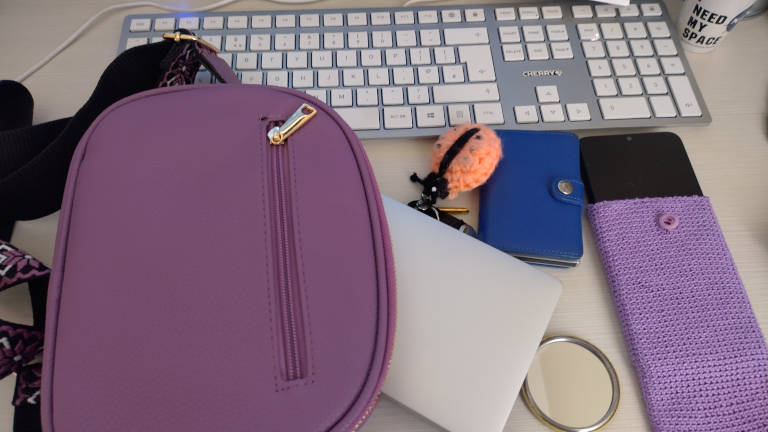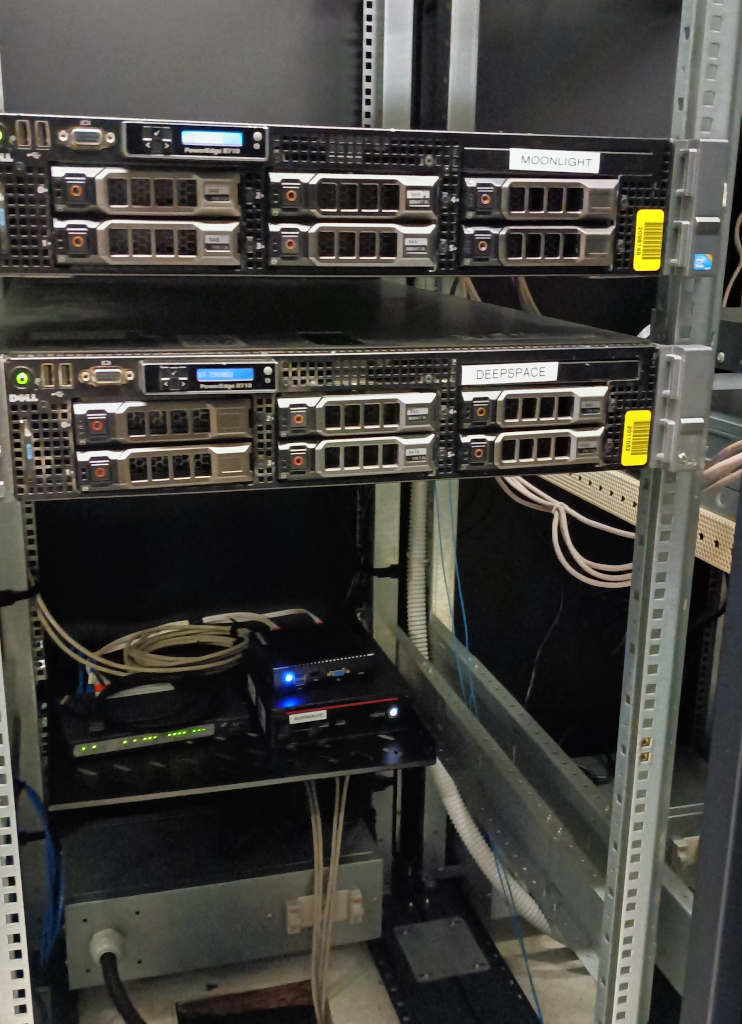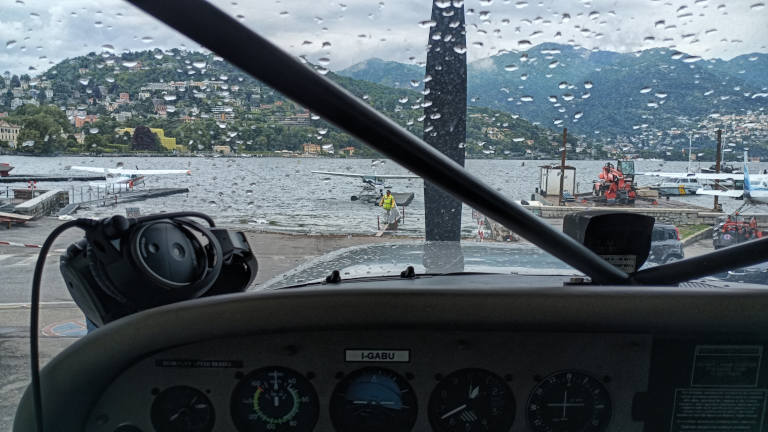Late Spring 2025 Updates
Servus from Tara’s offline outpost!
I’ve been cocooning in my offline hideaway through late winter and spring.
Not quite as I would have liked, though. I still rely heavily on the big city for medical visits and other appointments. I had hoped some of those would be done by now, but… 🤷
I’d love to share some news. These could have been separate blog posts, but I was too caught up in everything to find the energy to write them one by one. So, you’ll have to deal with a long, cumulative update instead. Who knows, I might still write separate posts to dive into some of the topics.
Spring made a strong entrance: it rained almost constantly, and it felt more like autumn than spring. Not that I’m complaining, I love it when it rains and I’m cocooned in my little space.
The sun has shown up in the past few days… along with my pollen allergies. That’s the curse of this season: I could finally go out for a nice walk, but instead, I’m stuck at home with anti-allergy pills. That’s also why I haven’t been able to fly as much as I wanted. Either it was raining when I booked, or it was fully booked when the weather was nice. Or I had other obligations to attend to.
One good piece of news: I now have a desk at my offline outpost! That means I finally have space for an external monitor and keyboard with my laptop. There’s little room for anything more, though, hence the changes in my Milan home and my colocation, which I’ll talk about later in this post.
Angie, as usual, has been a huge moral support on dark days. That “damn” stuffed rabbit is amazing. And I’ve also started weekly chats with someone new, something I’ve genuinely looked forward to each week. I can’t thank her enough for that.
By now, you probably know me: I’m slow at everything. But I usually get things done… just in my own time. I’m not the type to dive head-first into a project. I tend to run on low batteries, and I have to manage my energy carefully. I prefer the “Sherpa Step” approach: slow, steady progress. There’s probably a reason someone used to call me “the mountain tulip”. 😉
Anyway, let’s move on to the tech stuff, as you might enjoy that more.
The PursePC
Perhaps the first bit of news to share is about what I call “The PursePC”.
In my Hermit project posts, I mentioned that I have a GPD Pocket mini-laptop, the perfect 8" size to fit in my purse. Hence the name.
Until now, the problem was that the screen was rotated 90 degrees in the BIOS/UEFI, since the device was originally meant to be a gaming PC. That made it pretty much unusable as a regular laptop, as I showed in the last post of the Hermit saga.
Still, I really wanted to use it as an offline device, for writing or basic productivity, while wandering around. It’s different from a regular laptop: more portable, easy to leave in my purse without a second thought, and much more usable than a phone, thanks to the built-in keyboard. I find external keyboards with phones or tablets awkward, especially when typing on my knees. I really need a device where the keyboard is physically attached; others might be fine with different setups, but this one works best for me.
Linux and X.org let you rotate the screen, but when using framebuffer console rotation, the only supported resolution on this device is 1200x1920, which makes everything unreadable for someone like me who wears reading glasses (ah, I’m getting old!).
So I started experimenting. I tested a bunch of Linux distros with X.org, using xrandr to rotate the screen and timing the boot process. The goal was to get it as close to instant-on as possible.
I almost settled on SLAX, one of the fastest options. But I was stubborn and I really wanted to run FreeBSD!
Eventually, I dug up an old patch for FreeBSD 13.1, recompiled the kernel, optimized the startup phase, found a nice font (Spleen), and generated a custom console font size (24x48) that was actually readable without glasses.
The result? A 19-second boot time, with a clean, readable text-based console. Not bad.
The software setup is similar to the Hermit Project, with nano being probably the most used application. Of course, there are some limitations (which I might explore in a separate post), and they’re making me wonder whether I should reconsider the FreeBSD choice.
While I still aim for a FreeBSD-first approach, I shouldn’t be too stubborn: functionality and practicality matter too.
Learning COBOL
As I mentioned in my late winter post, I’ve been learning COBOL. And… hurrah! I’ve built my first COBOL application!
It’s a small tool to manage some collectables that have barcodes, made up of a few standalone modules. Nothing rocket-science, not too complex, and definitely far from perfect. But it’s a start, and it’s what I used to begin learning COBOL in practice.
I still have a lot to learn, but I’m committed to exploring this platform. It’ll be a slow journey, since I don’t find writing programs nearly as fun as working with systems. A post has been sitting in the back of my mind for ages, one about how I see programming languages and why I gravitate toward 4GL languages like COBOL or Clipper.
I’d also love to explore how it feels to port this little application to System i (aka IBM i or AS/400) or z/OS (aka MVS). While my heart still belongs to open source -and that’ll always be my first love- I do have a deep admiration for AS/400 and Mainframe hardware. Maybe it’s nostalgia, or maybe it’s my past working at IBM, but I feel a bit of that old spark coming back when I think of those platforms.
Needless to say, the application runs on the PursePC, paired with a barcode reader. It’s a fun way to put that little machine into action while out and about, for example, checking whether I already have a particular collectible at home, so I don’t end up with duplicates.
I don’t know… I’m just fascinated by the idea of these mobile-like applications that run on tiny PCs.
Reticulum Network and Alternate Transmission Protocols (Part 1)
Lately, I’ve been experimenting with Reticulum Network, a non-IP based way to transmit data. What I like about it is that it supports multiple media types: from raw Ethernet to serial, radio modems, and even LoRa.
I’ve converted two Heltec V3 devices from Meshtastic to Reticulum LoRa nodes. So far, I’ve only done basic connectivity tests and no real-world use yet. But it’s a start.
In the back of my mind, I’ve always dreamed of helping mountain communities create their own independent transmission networks, ones that don’t rely entirely on the public Internet. Instead, the idea would be to foster their own “small community pond”, something I once theorized together with Dave Täht.
BBSes and Alternate Transmission Protocols (Part 2)
Alongside my experiments with Reticulum as an alternate form of networking, I’ve also been revisiting BBSes. Yes, despite everything, they are still alive and well!
It’s not just nostalgia, though, in line with what I mentioned in the previous section, I’m exploring offline and alternate forms of communication and trying to find ways to foster small communities.
Social media has become too bloated and noisy, with more focus on showing off (or even attacking) than on building meaningful relationships that extend beyond the screen. Even Mastodon, which doesn’t have proprietary algorithms and feels more “natural”, still mostly feels the same to me.
My friend Bitzero theorized that we should return to smaller communities, where people actually know each other and that familiarity can foster better interactions. And what if those communities were mountain communities?
If I’m honest, there is nostalgia, but it’s not about the technology itself. It’s about missing that more genuine interaction with the people around you.
Right now, I’m experimenting with an old file format called QWK, which allows you to download private and group messages into a single file that can then be processed offline by a local mailer (for example, MultiMail). Replies are packaged back in the same format and sent back to the BBS for distribution.
In my opinion, this is a perfect way to handle sporadic connections without relying on IP networks. And it fits perfectly with the PursePC! I can download the QWK file to a USB stick and reply at my own pace.
You might enjoy a list of active BBSes running Synchronet software.
Hardware Changes in Milan and Offline DR
I’ve decommissioned my QNAP TBS-453A with the TR-004 expansion that served me well for several years. Fun fact: the QNAP was gifted to me by the same person who gave me the GPD Pocket when I was living in Switzerland (Thanks, Erik!). Newer QNAP updates made the device slower, but it was still usable.
The reason I decommissioned it, as I outlined in a previous post, is that while it’s a great device I would recommend to many, it’s just not for me. I used the 8TB disks from the TR-004 expansion to upgrade the NAS built with FreeBSD on the N40L. Yes, the same N40L I started working on back in September 2022, for those who remember that initial Twitter post.
I now have around 30TB, and it holds the online DR copy of the Dell R710 data in my colocation, as well as processing some batch jobs. The upgrade worked like a charm thanks to the amazing ZFS: I replaced the disks one by one, waiting for each to resilver. When I completed the replacement, the zpool automatically resized (I used autoexpand, check it out).
The CPU is slow (a very old AMD Turion II with two cores), and 8GB of memory isn’t much, but with a basic FreeBSD install, that’s more than enough for the task.
Since I’m spending more and more time in my offline outpost (and who knows what life will bring!), I decided to limit the hardware in my Milan house. So the N40L and a Ubiquity Cloud Key are the only server-side computers left on the premises. They still take advantage of the 1Gb FTTH connection for file replication and remain reachable via my multi-point WireGuard VPN.
I also bought a couple of large USB disks, on which I run ZFS, and brought them to my offline outpost to use as offline DR. All the filesystems, including those on the R710 and N40L, are encrypted, so the offline DR ZFS disks inherit the same encryption.
I can’t be much more paranoid about my data and sometimes I feel like I’m protecting it better than most companies do.
Colocation: Follow-up on the R710 Saga and More
I don’t know if you read my previous post about my Dell R710 saga. I mentioned I had a twin R710 in my garage that I planned to refurbish. It took longer than expected, mostly because I have a health condition where my hands can go numb, especially in cold weather. Since it was stored in a garage, the cold winter made it tough to work on the machine. I tried, but my hands went numb multiple times, so I had to wait for warmer days.
This R710 has the same hardware specs as its twin: 2 Xeon E5645 CPUs and 144GB of ECC RAM. I had to replace some faulty DIMMs, but luckily I bought enough spares when refurbishing the first R710. I also swapped the original PERC H100 with an LSI SAS HBA modified to work in IT mode so I could comfortably run ZFS.
I needed to replace the SAS/SATA cables as well, since the connectors weren’t standard on the PERC HBA ends. Unfortunately, during the process, I broke the metal bracket that held cable B in place inside the system, because the old cable was stuck and wouldn’t come out. I worried I’d lose half the disk devices in that system, but it ended up working anyway. The tight fans actually help keep the cable in place.
I bought 2x1TB SSDs for boot drives, plus 2x8TB HDDs I had in a box for local backup/archive of test VMs. I still need to buy either 2x2TB or 2x4TB SSDs for VM/Jail storage to make it fully operational, but after too many expenses, I decided to wait for the next paychecks.
While the first R710 (moonlight) is a NAS/server for my personal needs, the second R710 (deepspace) is an experimental playground for playing with software and technologies on top of VMs and Jails.
I also brought and connected a mini PC, a Fujitsu with an Intel i5, 16GB of RAM, and 1TB SSD, that was sitting around in my Milan house. I originally bought it to experiment during the testing phase of Podman on FreeBSD, but now that those tests are done, I decided to put it on the external Internet and use it to experiment with software that requires inbound connections, for example, a Reticulum TCP server that could act as an Internet backup for long-distance non-IP connections.
Last but not least, I’m proud that all systems in my colocation are running FreeBSD! It’s not much, but I’m satisfied with my current setup.
I’d love to find a used IBM Power server so I could run AS/400 (ok, System i now!) on my own and experiment with its sysadmin side. But perhaps a more urgent need is to buy another switch, since I’ve maxed out my current 8-port one. Honestly, I’m not sure which network switch to go for next.
The Upcoming Summer
Reading back on this post, I realized I accomplished more this spring than I initially thought. It’s been -and still is- very tough, and maybe sticking to my “Sherpa Steps” philosophy is the best approach. I do what I can, in my own time, and focus on what I call “useless projects” in my spare time, projects that might not be viable for work or building a career, but because of that, bring me some happiness.
I also need to renew my SEP/Sea (aka seaplane) qualification this June, and I haven’t flown much lately. So, I need to find a way to build up hours. Gosh, how much I miss my flying days in Vancouver.
What I can tell you is that I’m NOT looking forward to the hot summer. I like spring and early summer when I can wear lighter clothes, but I can’t stand temperatures above 30°C-35°C! It’s just too much.
See you around, perhaps you’ll find me in the “underground”.
The PursePC: compact, quiet, and always with me:

My colocation after the R710 and mini-pc installation:

Seaplane operations in light rain on Como Lake:
